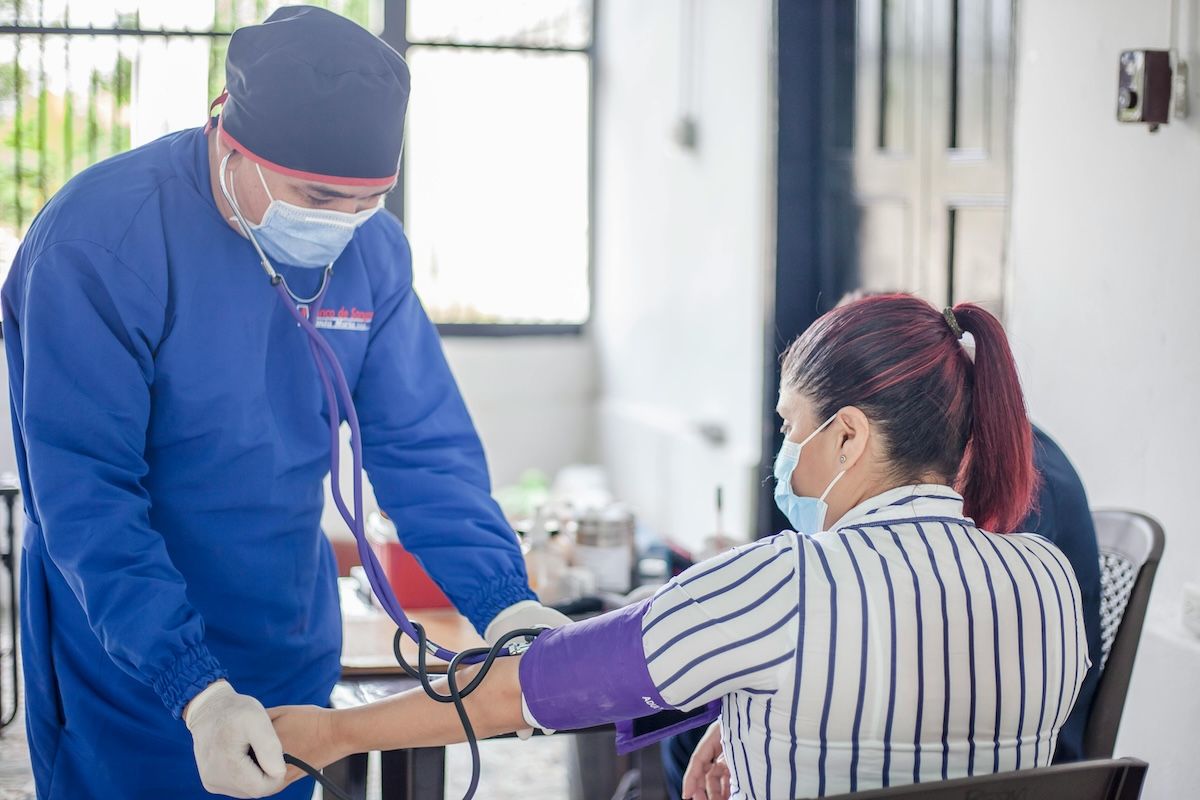Best Student Loans For Bad Credit for December 2026
When it comes to student loans, the higher your credit score, the better your chances of qualifying for low interest rates and similar beneficial terms. However, when it comes to paying for college, most students have a low or no credit score simply because they haven't been able to build credit yet. Still, there are compelling financing options even for poor credit students.
According to 2024 data from the Department of Education, the average federal student loan debt for undergraduate borrowers is $37,850. To help students find the best student loans for bad credit, I analyzed public data from different institutions. Drawing from my years of experience in academic counseling, I've rounded up the best options for such loans, highlighting factors, such as availability, requirements, terms, and interest rates, among others.
Key Things You Should Know About Student Loans for Bad Credit
- Bad credit refers to a low credit score or a history of financial mismanagement. It can negatively impact your ability to secure a loan.
- A credit score below 580 is considered poor, while 580-669 scores are considered fair.
- Interest rates for private student loans are around 4.29% to 16.72% for variable rates, and from 4.07% to 15.99% for fixed rates.
- Keeping your credit card balances below 30% of your credit limit improves your credit score. This is known as your credit utilization ratio, and lower ratios are better for student loans for bad credit.
- A co-signer with a strong credit history can mitigate the lender’s risk, making them more likely to approve your loan application.
Table of Contents
- Best Student Loans for Bad Credit for 2026
- What is considered bad credit when applying for student loans?
- Does bad credit affect eligibility for financial aid?
- How do you apply for student loans with bad credit?
- What are the latest student loan interest rates for borrowers with bad credit?
- How can you improve your credit score to get better student loans?
- How can students with bad credit secure emergency funding quickly?
- How does having a co-signer help with getting student loans for bad credit?
- What should students consider when weighing long-term costs for student loans with bad credit?
- What are the repayment options for student loans with bad credit?
- What are some alternative funding options for students with bad credit?
- What are the best practices for students to avoid worsening their credit while in college?
- How can comprehensive financial planning optimize student loan debt management?
- What specialized student loan options exist for graduate students with bad credit?
- How can students identify reputable lenders and avoid predatory practices?
- How do online education options present additional financing advantages for students with bad credit?
- Can accelerated degree programs help reduce student loan debt for students with bad credit?
- How can students effectively compare student loan offers with bad credit?
- How can remote education opportunities mitigate financial stress for students with bad credit?
- How can students rebuild their credit after taking on student loans?
- Are there any upcoming regulatory changes affecting student loans for bad credit?
- Other Things You Should Know About Best Student Loans for Bad Credit
Best Student Loans for Bad Credit for 2026
1. Federal Direct Subsidized Loans
Federal direct subsidized loans are the most affordable and flexible options for undergraduate and graduate student loans for bad credit. The Free Application for Federal Student Aid (FAFSA) determines which undergraduate students can receive subsidized loans. Then, the government will pay the interest as students are in school, during their grace period, and when students put loans into deferment.
Subsidized loans have one of the lowest interest rates, and don't require a co-signer. All qualified borrowers get the same rate irrespective of credit history. They also access income-driven repayment options that lower the amount due and loan forgiveness for public service field workers.
- Loan Amounts Available: $5,000 minimum (no maximum, except for associate's degree holders who can refinance up to $50,000)
- Loan Terms: 5, 7, 10, 15, and 20 years
- Eligibility: Must be an undergraduate and show financial need; must attend at least half-time in a school under the federal direct loan program
- Forbearance Options: Forbearance is available for up to 3 years in specific circumstances. An income-driven repayment scheme can reduce monthly payments and lead to loan forgiveness after 20-25 years.
2. Federal Direct Unsubsidized Loan
Federal direct unsubsidized loans have low fixed interest rates, don't need a co-signer, and aren't credit-based. All borrowers get the same rate no matter their credit history. They also have access to income-driven repayment programs. Direct unsubsidized loans have an origination fee of 1.057%, while many private loans don't. Mostly, the low interest rate and loan advantages justify the fee.
- Loan Amounts Available: Up to $12,500 annually and $57,500 in aggregate
- Loan Terms: 10 and 25 years
- Eligibility: Must attend at least half-time in a school participating in the federal direct loan program
- Forbearance Options: Available for up to 3 years in specific circumstances. An income-driven repayment scheme can reduce monthly payments and lead to loan forgiveness after 20-25 years.
3. Ascent Undergraduate Future Income-Based Loan
This is one of the two types of loans Ascent offers to undergraduates who don't need a co-signer. It's intended for students without a credit history or who don't fulfill the income requirements for Ascent's other loan that doesn't need a co-signer. One's qualifications and interest rate depend on school, time to graduation, educational program, GPA, and other considerations.
- Loan Amounts Available: $2,001-$20,000 annually; up to $200,000 in aggregate for all types of Ascent loans
- Loan Terms: 5, 7, 10, 12, 15, or 20 years
- Eligibility: Must be a college junior or senior with a 2.9 or higher GPA who is enrolled at least half-time; no minimum income or credit requirement
- Forbearance Options: N/A
4. Chicago Student Loans by A.M. Money
A.M. Money borrowers are determined based on their GPA and academic background, not their credit history. A.M. Money doesn't allow co-signers and offers an income-based repayment option for up to 36 months. The firm levies an origination fee of 4.5%. The plan's minimum monthly payment is $50.
- Loan Amounts Available: $2,001 to overall cost of attendance, up to $50,000 cap
- Loan Terms: 3 or 10 years
- Eligibility: The loan is based on merit, which means no income or credit requirements. Borrowers must be enrolled in one of the qualified schools, but those from unlisted schools are still encouraged to apply.
- Forbearance Options: Up to 12 months; students can make income-based payments for up to 36 months
5. Funding U
Funding U doesn't offer loans based on credit and doesn't ask students to have a co-signer. They qualify depending on year in school, educational and work background, courses, graduation plans, and projected earnings. Yet, the company doesn't lend in each state and claims its lowest rates are only for college seniors with good academic standing.
- Loan Amounts Available: $3,000-$10,000 annually ($50,000/student aggregate)
- Loan Terms: 10 years
- Eligibility:
- Students must fulfill GPA requirements and be enrolled in schools with particular 6-year graduation rate thresholds, depending on the borrower's year in school
- Only students from Arizona, Arkansas, Colorado, Connecticut, Florida, Georgia, Hawaii, Illinois, Indiana, Kansas, Maryland, Massachusetts, Michigan, Missouri, Nebraska, New Jersey, New Mexico, New York, North Carolina, Ohio, Oregon, Pennsylvania, South Carolina, Tennessee, Texas, Vermont, Virginia, West Virginia and Wisconsin are eligible
- Forbearance Options: Up to 24 months in 90-day increments; students need to pay $30 monthly
6. Prodigy Finance
London-based Prodigy Finance caters to international master's students seeking private student loans without a co-signer requirement. However, eligibility hinges on attending an approved school in one of the 18 countries they serve. Interest rates are variable, adapting to market conditions, and individual offers are determined by your course of study and projected future earnings. While Prodigy Finance advertises an average rate of 7.3%, keep in mind there's an additional 4% administrative fee spread out over your monthly payments.
- Loan Amounts Available: $15,000 minimum; maximum amount based on individual application
- Loan Terms: 7 to 20 years
- Eligibility: Students must be attending an eligible school on at least a part-time basis
- Forbearance options: Available for 9 months. Borrowers facing financial difficulties such as medical emergencies or unexpected family responsibilities can apply for interest-free payment arrangements or reduced payments.
Here's What Graduates Have to Say About Their Student Loans for Bad Credit
"I was worried my bad credit would prevent me from getting a student loan, but I found a lender who looked beyond my credit score. The process was surprisingly smooth, and I was able to finance my education without stress. Now, I'm on my way to a brighter future." – Luis
"Securing a student loan with bad credit felt daunting, but I was pleasantly surprised by the options available. The flexible repayment plans and supportive customer service made it all possible. Today, I'm proud to be pursuing my degree." – Angelica
"Despite my bad credit, I got a student loan that covered all my tuition fees. The lender understood my situation and offered terms that worked for me. This opportunity has truly transformed my educational journey." – Alison
What is considered bad credit when applying for student loans?
Bad credit, when applying for student loans, generally refers to a low credit score or a history of financial mismanagement that can negatively impact your ability to secure a loan. Key indicators include:
- Credit Score: A FICO score below 580 is typically considered poor, while scores between 580 and 669 are considered fair. Lenders may hesitate to approve loans for individuals with scores in these ranges.
- Payment History: Late payments, defaults, or accounts in collections can significantly lower your credit score and are red flags for lenders.
- High Debt-to-Income Ratio: A high ratio indicates that you have a large amount of debt relative to your income, which can make lenders wary of extending additional credit.
- Bankruptcy or Foreclosure: A history of bankruptcy or foreclosure can severely damage your credit and hinder your ability to obtain student loans.
- Limited Credit History: A lack of credit history can also be a problem, as lenders cannot assess your creditworthiness.
When applying for federal student loans, credit scores are generally not a factor, except for PLUS loans, where an adverse credit history can be a disqualifying factor. For private student loans, lenders typically perform a credit check, and having bad credit can result in higher interest rates or denial of the loan application.

Does bad credit affect eligibility for financial aid?
Generally, bad credit doesn't affect eligibility for most types of federal financial aid, but it can impact certain types of loans.
For instance, some types of financial aid don't require a credit check. Eligibility for Pell Grants, for instance, is based on financial need as determined by the FAFSA. Federal direct subsizidized loans are granted based on financial need as well. The same is true for federal work-study programs.
However, bad credit may affect one's eligibility for certain types of financial aid. This is true for federal Parent PLUS and Graduate PLUS loans. Students planning to secure a loan from private loan companies must also be prepared to have their credit histories checked. Lenders may require a co-signer with good credit if your credit is poor.
According to the Federal Reserve Bank of New York's Center for Microeconomic Data, current student loan debt accounted for 1/3 of non-housing debt. The chart below provides more details on non-housing debt in the US.
How do you apply for student loans with bad credit?
Student loans for bad credit applications involve several steps, focusing on maximizing federal aid options and considering private loan alternatives with co-signers. Here’s my step-by-step guide for you:
- Complete the FAFSA: The FAFSA application determines your eligibility for federal grants, work-study, and federal student loans. Include all required information about your financial situation. Submitting the FAFSA application form is essential even if you have bad credit because federal loans don't require a credit check (except for PLUS loans).
- Find a Cosigner: A cosigner with a high credit score can improve your eligibility for a private student loan and potentially secure a lower interest rate.
- Compare lenders: Compare and shop around to identify the most favorable terms from various lenders. Certain lenders specialize in providing loans to students with poor credit. You can also explore the possibility of borrowing from credit unions.
- Contact Your School's Financial Aid Office: Ask about institutional loans, grants, scholarships, and payment plans that might be available to you.
- Search for Scholarships and Grants: Do your research on scholarships and grants available from your state or local community organizations and apply for as many scholarships as you qualify for.
What are the latest student loan interest rates for borrowers with bad credit?
My research shows that the latest interest rates for private student loans range from around 4.29% to 16.72% for variable rates, and from 4.07% to 15.99% for fixed rates. These rates are influenced by factors, such as the borrower’s credit score, income, and whether a co-signer is involved.
For example, lenders offer loans with interest rates starting at 4.29% for those with co-signers, but rates can go up to 16.09% for non-cosigned loans. Other lenders also provide competitive rates but typically require better credit or a co-signer to secure the lowest rates.
I encourage students to research all available loan options to ensure they're getting the best interest rates for student loans for bad credit.
How can you improve your credit score to get better student loans?
Improving your credit score can help you qualify for better student loan terms and interest rates. Some strategies to boost your credit score are as follows:
- Check Your Credit Report for Errors: Obtain a free copy of your credit report from each of the three major credit bureaus (Experian, TransUnion, Equifax) through AnnualCreditReport.com. Review the reports for errors or discrepancies, such as incorrect personal information, accounts you didn’t open, or inaccurate payment records. Dispute any errors with the credit bureau to have them corrected.
- Pay Your Bills on Time: Consistently paying your bills on time is one of the most important factors in improving your credit score. Set up automatic payments or reminders to ensure you don't miss any due dates. Late or missed payments can stay on your credit report for up to seven years, negatively impacting your score.
- Reduce Your Credit Card Balances: Aim to keep your credit card balances below 30% of your credit limit. This is known as your credit utilization ratio, and lower ratios are better for your score. If possible, pay off your credit card balances in full each month or at least make more than the minimum payment.
- Avoid Opening New Credit Accounts: Each time you apply for a new credit account, it results in a hard inquiry on your credit report, which can temporarily lower your score. Limit new credit applications and only open new accounts when necessary.
- Keep Old Credit Accounts Open: The length of your credit history is a factor in your credit score. Keeping older accounts open, even if you don't use them frequently, can positively impact your score. Closing old accounts can reduce your overall credit limit, increasing your credit utilization ratio.
- Diversify Your Credit Mix: Having a mix of different types of credit accounts (e.g., credit cards, installment loans, mortgages) can benefit your credit score. Only take on the credit you need and manage responsibly.
- Seek Professional Help if Needed: If you're struggling with debt, consider speaking to a credit counselor. Nonprofit credit counseling agencies can offer advice and help you create a plan to manage your debt. Be cautious of credit repair companies that promise to improve your score quickly for a fee though, as some may not be legitimate.
How can students with bad credit secure emergency funding quickly?
For students facing last-minute financial needs, securing funding with bad credit can be daunting, but there are specific strategies to meet urgent expenses without added stress. One viable option is exploring last minute student loans tailored for borrowers in time-sensitive situations. Many private lenders offer expedited application processes, some even providing decisions within 24 to 48 hours. However, these loans often require higher interest rates or a co-signer to mitigate the risks associated with bad credit.
Beyond private options, federal student aid remains a critical resource. Emergency federal loans, such as short-term institutional loans often managed directly by universities, can provide quick relief. Additionally, students should look into grant-based emergency aid programs available through their college, which typically do not require repayment. Work-study income advancements are another route, allowing students to access future earnings upfront to cover immediate costs.
It's also worthwhile to consider alternative funding methods, such as crowdfunding platforms, which connect students with supporters willing to contribute to their educational aspirations. Students may also explore state-specific emergency assistance programs or nonprofit organizations offering aid to individuals in financial distress.
How does having a co-signer help with getting student loans for bad credit?
A co-signer can significantly help when applying for student loans, especially if you have bad credit. The benefits of having one are:
- Improved Loan Approval Chances: A co-signer with a strong credit history can mitigate the lender’s risk, making them more likely to approve your loan application. Lenders see co-signers as additional assurance that the loan will be repaid.
- Better Interest Rates: With a co-signer who has good credit, you can often secure a lower interest rate compared to applying on your own. This can save you a significant amount of money over the life of the loan.
- Access to Higher Loan Amounts: A strong co-signer can help you qualify for larger loan amounts, which might be necessary to cover the full cost of your education. Without a co-signer, your borrowing capacity could be limited by your creditworthiness.
- Enhanced Loan Terms: In addition to better interest rates, having a co-signer can sometimes provide access to more favorable loan terms, such as longer repayment periods or more flexible repayment options.
- Building Your Credit: Successfully repaying a loan with a co-signer can help build your credit score over time. As you make timely payments, it will reflect positively on your credit report, potentially improving your creditworthiness for future borrowing.
Considerations When Using a Co-Signer
The co-signer is equally responsible for the loan. If you miss a payment or default, it will negatively impact both your credit score and the co-signer’s credit score.
- Release Options: Some lenders offer co-signer release options after a certain number of on-time payments. This can relieve the co-signer from their obligation if you demonstrate responsible repayment behavior.
- Relationship Impact: Co-signing can strain personal relationships, especially if financial difficulties arise. It’s important to have a clear agreement and understanding with your co-signer about the responsibilities involved.

What should students consider when weighing long-term costs for student loans with bad credit?
When securing student loans with bad credit, understanding the long-term financial implications can help students make informed decisions. Even though accessible financing options exist, certain factors deserve careful evaluation to ensure future financial health.
Interest Accumulation Over Time
Loans tailored for students with bad credit often come with higher interest rates. Over time, this can lead to substantial repayment amounts, sometimes far exceeding the original loan balance. Borrowers should consider calculating the total cost of the loan, including projected interest, to anticipate the financial burden over the life of the loan.
Loan Terms and Flexibility
Loan terms, such as the repayment period and flexibility options, can significantly alter long-term costs. Federal loans typically provide extended terms, income-driven repayment plans, and access to deferment or forbearance. On the other hand, private loans may lack such benefits, which can become critical if financial circumstances change during repayment.
Risk of Penalties and Additional Fees
Private loans, often required by students with bad credit, may include origination fees, late payment penalties, and other charges. Understanding these additional costs ahead can help avoid hidden financial pitfalls. Students are encouraged to closely review the fine print of their loan agreements.
Value of the Degree and Expected Income Return
In deciding to take on student loans, students should align their borrowing with the potential return on investment of their degree. Certain degrees or career fields might justify higher loan amounts due to stronger earning potential post-graduation. For example, aspiring veterinarians often face notable student loan balances. How much is vet school loans? Researching the answer can provide valuable context for planning one's financial strategy.
Considering Alternatives Before Borrowing
Before committing to high-interest loans, students should exhaust alternative funding sources, such as federal aid, scholarships, and grants, as these typically have minimal or zero cost of repayment. Combining smaller funding sources can often reduce dependency on riskier private loans.
By weighing these considerations thoughtfully, students can mitigate the financial impact of borrowing while working toward their educational goals.
What are the repayment options for student loans with bad credit?
Student loans for bad credit come with several repayment options available:
Income-Driven Repayment Plans (IDR)
- Income-Based Repayment (IBR): Payments are capped at 10%-15% of your discretionary income and recalculated annually based on your income and family size.
- Pay As You Earn (PAYE): Payments are capped at 10% of your discretionary income and recalculated annually. The remaining balance is forgiven after 20 years of qualifying payments.
- Revised Pay As You Earn (REPAYE): Similar to PAYE, but payments are recalculated based on 10% of your discretionary income, with forgiveness after 20 years for undergraduate loans and 25 years for graduate loans.
- Income-Contingent Repayment (ICR): Payments are the lesser of 20% of your discretionary income or what you would pay on a fixed payment plan over 12 years, adjusted according to your income.
Extended Repayment Plan
This plan allows for a longer repayment period (up to 25 years) with lower monthly payments. Eligibility depends on having more than $30,000 in outstanding Direct Loans.
Graduated Repayment Plan
Payments start low and gradually increase every two years. The repayment term is typically 10 years but can be extended up to 30 years for consolidation loans.
Consolidation Loans
Combining multiple federal student loans into a single loan with a fixed interest rate based on the weighted average of the interest rates on the loans being consolidated. This can simplify payments and potentially extend the repayment term, lowering monthly payments.
Deferment and Forbearance
Temporary postponement or reduction of payments for specific reasons, such as financial hardship, unemployment, or medical issues. Interest may still accrue during this period, depending on the loan type.
Private Student Loan Options
Some private lenders offer repayment plans tailored for borrowers with bad credit, including flexible payment options or modified payment schedules. However, these options vary widely among lenders.
Loan Forgiveness Programs
Certain public service careers or working in specific fields may qualify for loan forgiveness after meeting specific criteria, such as making a set number of qualifying payments.
Refinancing
Refinancing federal and private loans with a private lender to potentially lower interest rates and monthly payments. This typically requires good credit, so a co-signer might be necessary for those with bad credit.
Alternative Lenders
Some lenders specialize in loans for individuals with poor credit, often with higher interest rates and fees. It's essential to carefully review terms and conditions.
Seeking Financial Counseling
Consult with a financial advisor or student loan counselor to explore personalized repayment strategies and better manage student loans for bad credit.
What are some alternative funding options for students with bad credit?
For students with bad credit, there are several alternative funding options available to help finance their education:
Federal Student Aid
- Pell Grants: Need-based grants that do not need to be repaid.
- Federal Supplemental Educational Opportunity Grants (FSEOG): Additional need-based grants for students with exceptional financial need.
- Direct Subsidized Loans: Loans for students with financial need where the government pays the interest while the student is in school.
- Direct Unsubsidized Loans: Loans available to all students, regardless of financial need, where interest accrues while the student is in school.
Scholarships
Many organizations, institutions, and private foundations offer scholarships based on merit, need, or specific criteria such as field of study, background, or extracurricular activities.
Grants
On top of federal grants, many states and private organizations offer grants. These grants don't need to be repaid and are often based on financial need, academic achievement, or other criteria.
Work-Study Programs
Federal Work-Study provides part-time jobs for students with financial need, allowing them to earn money to help pay education expenses.
Community College
Starting at a community college can significantly reduce the cost of education. Many community colleges have transfer agreements with four-year universities.
Income Share Agreements (ISAs)
Some schools and private organizations offer income share agreements, where students agree to pay a percentage of their future income for a set period after graduation instead of taking out traditional loans.
Employer Tuition Assistance
Many employers offer tuition reimbursement or assistance programs for employees pursuing further education.
Military Benefits
The GI Bill, also known as the Servicemen's Readjustment Act of 1944, and other military education benefits can provide substantial funding for service members, veterans, and their families.
State-Specific Programs
Many states offer grants, scholarships, and loan forgiveness programs to residents who attend in-state schools. Researching state-specific options can yield additional funding opportunities.
Crowdfunding
Platforms like GoFundMe allow students to raise money for their education from family, friends, and the general public.
Credit Unions and Community Banks
Some local financial institutions offer student loans with more favorable terms than traditional private lenders, sometimes without strict credit requirements.
Peer-to-Peer Lending
Many platforms connect borrowers with individual lenders, which can be an alternative to traditional bank loans. Interest rates and terms can vary, so it's important to compare options.
Part-Time or Online Study
Enrolling part-time or in online programs can reduce tuition costs and allow students to work while studying, minimizing the need for loans.
A recent report showed that professional degree graduates, such as those with medical or law school debt, borrowed an average of more than $168,000. The chart below provides more details on student loan debt by degree level.
What are the best practices for students to avoid worsening their credit while in college?
Maintaining good credit during college is crucial for financial stability in the future. My tips to avoid worsening your credit while in college entail:
- Budgeting and Financial Planning: Track your income and expenses to ensure you’re living within your means. Use tools and apps to keep an eye on where your money is going.
- Responsible Credit Card Use: Avoid having multiple credit cards. One or two is sufficient. Also, always pay your credit card bill on or before the due date to avoid late fees and interest charges. If possible, pay off the entire balance each month to avoid interest charges.
- Avoiding Excessive Debt: When taking out student loans, only borrow the amount necessary for your education and living expenses. Be aware of interest rates, repayment terms, and how much you’ll owe after graduation.
- Make Early or On-Time Payments: If you have unsubsidized student loans, consider making interest payments while in school to prevent the interest from capitalizing. At the same time, know when your loan payments start after graduation and plan accordingly.
- Build an Emergency Fund: Build a small emergency fund to cover unexpected expenses, reducing the need to rely on credit.
- Get a Part-Time Job: Consider a part-time job to help cover expenses and reduce the need for borrowing.
- Living Within Means: Choose affordable housing options like shared apartments or dorms. Avoid unnecessary spending on non-essentials, like luxury items, frequent dining out, and expensive vacations.
- Financial Education: Take advantage of financial education resources offered online or by your school to understand better how to manage money and credit.
Despite rising tuition costs, the first-ever annual decline in student loan debt was seen in 2023. The chart below indicates the state of total student loan debt since 2020.
How can comprehensive financial planning optimize student loan debt management?
Developing a robust financial plan is integral to mitigating the risks associated with student loans for bad credit. By aligning budgeting practices with realistic income projections, students can structure repayment strategies that adapt to changes in financial circumstances. Utilizing digital budgeting tools and professional financial counseling can provide clarity on debt prioritization and long-term savings goals. Additionally, analyzing career trajectories alongside education investments may reveal opportunities to pursue degrees from the cheapest online masters degree, thereby potentially increasing future earnings and expediting loan repayment.
What specialized student loan options exist for graduate students with bad credit?
Graduate students face unique challenges when managing loan options with a poor credit history. By targeting lenders with experience in higher education financing, borrowers can find tailored loan products that offer extended grace periods and flexible repayment structures. These specialized lenders often assess future earning potential and academic credentials rather than solely relying on credit scores. For instance, tools and resources like bad credit graduate student loans can assist in comparing offers that specifically cater to graduate studies. Evaluating such options can help secure competitive interest rates and fee structures while aligning financing with long-term career outcomes.
How can students identify reputable lenders and avoid predatory practices?
Evaluate lender credentials by reviewing licensing, transparent fee structures, and unbiased customer feedback. Cross-reference lender details with independent financial advisories to ensure clarity on interest rates, repayment terms, and associated costs. Utilize trusted resources, such as which banks offer student loans, to access updated information on established financial institutions offering student loans for bad credit.
How do online education options present additional financing advantages for students with bad credit?
Online education programs often reduce overall expenses by eliminating relocation and commuting costs, while offering flexible schedules that accommodate part-time work. These cost efficiencies can offset the financial challenges associated with bad credit. Several institutions design specialized financial aid plans and alternative funding opportunities that complement traditional student loan options, enabling borrowers to manage debt more effectively. For example, many affordable platforms are tailored to support credit-challenged students by providing comprehensive tuition assistance and streamlined application processes. To explore cost-effective online programs, consider reviewing online colleges in california that accept FAFSA.
Can accelerated degree programs help reduce student loan debt for students with bad credit?
Accelerated degree programs can offer a viable strategy for limiting loan exposure by reducing the overall time spent in school, which in turn minimizes tuition costs and interest accumulation. Such programs are structured to allow students to achieve their academic goals more quickly, facilitating an earlier entry into the workforce. For borrowers with bad credit, saving on both tuition duration and associated loan interest is crucial. In this context, pursuing fast track online degrees may provide additional financial relief by streamlining the pathway to degree completion and reducing long-term debt burdens.
How can students effectively compare student loan offers with bad credit?
Leverage comprehensive loan comparison tools that focus on hidden fees, overall cost, transparent customer support, and repayment flexibility. Evaluate digital platforms for user reviews and ratings to gauge lender reliability. Independent third-party assessments can provide further insight without bias, helping to identify offers that balance competitive interest rates with manageable terms. Additionally, consider consulting specialized resources, such as best online certificate schools, to ensure that the selected option aligns with your broader educational and financial goals.
How can remote education opportunities mitigate financial stress for students with bad credit?
By opting for programs that offer remote study options, students can reduce living expenses and benefit from enhanced scheduling flexibility, which aids in balancing work and academic responsibilities. Remote education also increases access to growing digital sectors where competitive salaries help offset repayment challenges. For example, pursuing one of the best masters for remote work can open doors to advanced roles that promote both career advancement and improved financial stability. Additionally, the reduced need for physical relocation and commuting may qualify students for exclusive financial aid packages tailored for distance learners.
How can students rebuild their credit after taking on student loans?
For students with bad credit, proactively rebuilding credit can help secure more favorable financial terms in the future. Focusing on consistent, on-time payments is paramount; setting up automatic payments and frequent monitoring of credit reports can quickly identify inaccuracies or opportunities for correction. Incorporating a disciplined budgeting strategy and reducing overall debt through targeted financial counseling are effective measures to restore credit health. Additionally, expanding skill sets by enrolling in short courses that pay well can increase income potential, further bolstering repayment capacity and credit rebuilding efforts.
Are there any upcoming regulatory changes affecting student loans for bad credit?
Recent discussions among policymakers suggest that both federal and state regulatory reforms could reshape borrower eligibility criteria, fee structures, and repayment protections for student loans, especially for those with bad credit. Monitoring updates from relevant government agencies is recommended, as these changes may influence interest rates and overall loan terms. It is also advisable to explore offers from student loan companies with low-interest rates to ensure alignment with the latest regulatory standards.
Key Findings
- Bad credit can make it more difficult for students to find favorable terms or interest rates for loans.
- Credit scores from 580 to 669 are considered fair, but any score lower than 580 is typically considered "poor."
- One way to improve credit scores is to keep your credit utilization below 30% of your credit limit.
- Having a cosigner with a high credit score can also make it easier for students to get the loans they need to fund their education.
- Students can expect variable interest rates of 4.3% to 16.7% for private student loans, while fixed rates are at 4.1% to 15.9%.
Other Things You Should Know About Best Student Loans for Bad Credit
What is the lowest credit score for student loans?
The lowest credit score for student loans varies depending on the type of loan. For federal student loans, such as Direct Subsidized and Unsubsidized Loans, there is no minimum credit score requirement, as these loans are awarded based on financial need rather than credit history. This makes them accessible to most students regardless of their credit scores.
However, for federal PLUS loans, while there isn't a specific minimum credit score, applicants must pass a credit check and must not have an adverse credit history, which includes certain types of delinquent or defaulted debts. Students with bad credit might still qualify for PLUS loans with an endorser or by documenting extenuating circumstances.
For private student loans, the minimum credit score typically required by lenders ranges from around 600 to 700. The exact score needed can vary by lender, with higher credit scores generally securing better loan terms and lower interest rates. Students with bad credit might still qualify for private loans if they have a creditworthy co-signer.
Which loan is easy to borrow?
The easiest loan to borrow for most students is a federal student loan, specifically Direct Subsidized and Unsubsidized Loans. These loans are relatively straightforward to obtain because they do not require a credit check, making them accessible to students regardless of their credit history. Eligibility for Direct Subsidized Loans is based on financial need, while Direct Unsubsidized Loans are available to all students, irrespective of need.
The application process is simple and involves filling out the Free Application for Federal Student Aid (FAFSA), which determines eligibility and loan amounts. Additionally, federal student loans often come with lower interest rates and more flexible repayment options than private loans, further easing student borrowing.
What are the risks of taking out private student loans with bad credit?
Taking out private student loans with bad credit carries several significant risks. One of the primary concerns is the higher interest rates that typically accompany poor credit scores, which can lead to much larger total repayment amounts over the life of the loan. Additionally, private loans often lack the flexible repayment options and borrower protections offered by federal loans, such as income-driven repayment plans and forgiveness programs.
Borrowers with bad credit may also be required to have a co-signer, which can put financial pressure on friends or family members who agree to co-sign. Furthermore, missing payments or defaulting on a private loan can severely damage credit scores, making it even harder to obtain credit in the future. In the absence of federal protections, private lenders may also be less willing to offer deferment or forbearance in times of financial hardship, increasing the risk of financial instability for borrowers.
References:
- 1FBUSA. (n.d.). 9 tips on how to build credit as a college student. 1FBUSA Blog.
- Council on Foreign Relations. (2021, April 13). Is rising student debt harming the U.S. economy? CFR.org.
- Federal Reserve Bank of New York. (2024, May). Quarterly report on household debt and credit. Federal Reserve Bank of New York.
- Federal Student Aid. (n.d.). Federal student aid. FSA.
- Hanson, M. (2024, March 3). Student loan debt Statistics. Retrieved June 21, 2024, from Education Data Initiative.


































